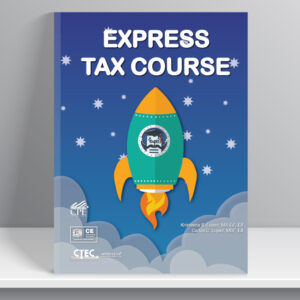Part I: Due Diligence and Penalties
This chapter will cover tax preparer due diligence and penalties. When the taxpayer files a return with refundable credits the tax preparer needs to complete an accurate tax return and complete Form 8867, which is attached to the taxpayer’s return.
Part II: Federal Tax Law
Compiling Taxpayers Information
Preparing tax returns is an art; knowing which questions to ask will help determine the best tax situation for the individual. Just imputing information into software does not prepare an accurate tax return. The saying is true: “garbage in, garbage out”. Entering incorrect information so that the taxpayer receives a higher refund is not the best situation for you or the client. This chapter provides you with a brief overview of current year forms and sample questions to determine the best tax position for the taxpayer. Asking the taxpayer, the right questions from the beginning provides the tax preparer accurate answers needed to complete the tax return.
Filing Status, Dependents and Deductions
This chapter will present an overview of the Tax Cuts and Jobs Act standard deduction and what circumstances permit taxpayers to claim a higher standard deduction. You will also learn what an exemption is, what exemptions each of the filing statuses can claim, and how to identify a qualifying dependent.
Income
The IRS has the authority to tax all income from whatever source it is derived. This includes compensation for services, gains from dispositions of property, interest and dividends, rent and royalties, pensions and annuities, gambling winnings, and even illegal activities. All such income a person receives is collectively referred to as “worldwide income.” However, not all money or property is taxable or subject to tax. This chapter will cover the different types of taxable and nontaxable income and show you where and how to report such wages on a professionally prepared tax return. A tax professional must recognize the different kinds of taxable income, tax-exempt income, and other income included in Schedule 1, line 21, and must know how to figure out the taxable percentage on Social Security benefits.
Tax Credits and Payments
A nonrefundable tax credit reduces the amount of tax liability that may have to be paid. Unlike a deduction, which reduces the amount of income that is subject to taxation, a credit directly reduces the tax itself. There are two types of credits: nonrefundable, which cannot reduce tax liability below zero, and refundable, which can reduce tax liability below zero, resulting in the need for a refund.
Part III: What Every Employee Needs to Know
Studies have shown that the first 3 seconds between two individuals is crucial. Eye contact, facial expression, and stature all determine how the individual will respond to the other person. It is very important in the tax preparation business that all employees and employers understand the importance of interacting with others. Although most of this chapter will use the terms receptionist or office staff, this section is important for all employees and employers in training excellent employees.
Employers, this section will help you relieve some of your stress during tax season. Take the time to train the front office staff in how you want them to answer your phone, how to deliver messages to you, and how to handle difficult customers.
The content in this section is based on our experiences. The examples given are suggestions, and as an employer you may be able to add areas that are unique to you. If you share them with us, we can share them with others.
end
| Course Details | Included in this course |
| Title: 2023 Express Tax Course Level: Basic Delivery Method: Self-study To earn a certificate of completion: • Pass Final Exams with 70% (or better) |
• 3-Part eBook • Videos • Practice Tax Returns • Certificate of Completion • Credits reported to CTEC and IRS • Final Exams |






